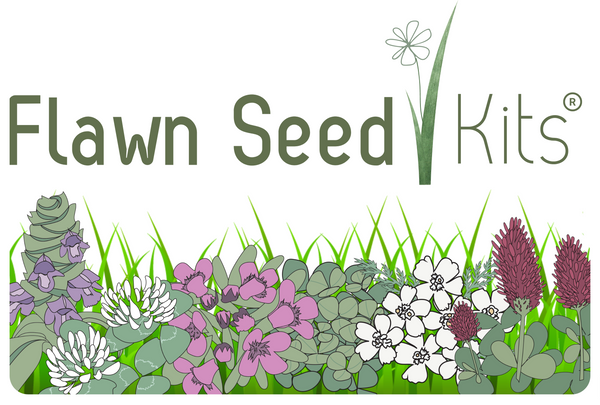
Countdown: The Top Three Best Times of the Year to Seed
Share
#3 Spring: If you live in a place that experiences winter, I’m sure you’re like me and everyone else who wants to rush out to the nearest garden center on the first sunny day after the snow melts away in spring and start working in the lawn and garden. When it comes to seeding though, let’s be sure to look at the big picture and fully think this through. Patching some snowplow damage or dog spots is all good and dandy; however, performing a full lawn renovation or flowering lawn transformation in springtime comes with a few challenges which makes it number three on this list.
Although mother nature will likely provide ample rain in the spring to help the seeds germinate it can sometimes shut off like a faucet in May or June and quickly become a hot and dry environment that the fragile seedlings now must survive. Nursing your new seedlings through drought or heatwaves may require more watering than you originally anticipated and may result in some loss of the seedlings if you can’t keep up with the frequent waterings or go away on vacation.
So, although springtime is the most popular time of the year for folks to seed it is not however the best time.
#2 Winter: I understand this one may not apply to everyone. Lucky for you if you don’t live in northern Wisconsin like I do and get up early to clear the driveway in -40F degrees below zero windchills. Even if you don’t get heavy season long snow cover though, your ground may still freeze for a few months and that presents a great opportunity to perform a dormant seeding. A dormant seeding is simply spreading seed over your existing grass lawn when it is dormant due to the low temperatures in the soil throughout the winter.
Instead of having to mow the lawn very short and rake the seed into the soil to incorporate it, you simply walk over the lawn and spread the seed and let mother nature take care of the rest. Throughout the winter the snow falls will help work the seed down and into the soil so that when springtime rolls around it is already in the best possible spot to grow. As the snow melts and the sun warms up the soil temperatures into the upper 50F’s and low 60F’s the seeds will germinate and start to establish themselves. You can use a simple soil thermometer to monitor the soil temperatures. The snowmelt helps to provide moisture and the fact that the grass is still dormant in early spring gives a leg up to the new seedlings to get established before the grass goes through its big growth stage later in spring.
It will still be important to water the seedlings regularly in spring and through droughts and heatwaves in summer as well as keep the existing grass mowed at 3.5-4” to prevent it from crowding out the new seedlings and to ensure a successful establishment.
#1 Late Summer and Early Fall: Specifically, as soon as the extended forecast doesn’t contain anymore mid to upper 80F degree days. Soil temperatures start falling in early August from their highs in July that may have forced your grass into summer dormancy. Once soil temperatures are back in the 60F’s and low 70F’s, and you start to receive more regular rainfalls, it is the ultimate time to perform your lawn seeding or flowering lawn transformation.
Simply mow your lawn very short at about 1-2” and make sure to break up any large clumps or rake the clippings off to the side so that the soil is exposed. Then walk in two perpendicular directions spreading about half of each seed variety in each direction to ensure full and even coverage for all seed varieties. Lightly rake to incorporate the seed into the soil and spread the clippings back over the seed if you removed them earlier.
It's not unheard of to have a late summer heatwave or fall drought so make sure to be prepared to water regularly as needed to ensure the seedlings germinate and establish successfully before winter.
Late summer and early fall are the best time to seed because the seedlings are unlikely to be subject to the extremes of summer as well as the pressure of weeds that seedlings in the springtime must compete against. By next summer the seedlings will be well established mature plants that are better suited to survive summer.

1 comment
I like this idea of the flowering lawn, but, what if you have a prepared bare border that you want to start a flowering wildflower bed? The seeds must be powerful to take root with grassroots already established. Can that be done or is it only for grass? Thank you!